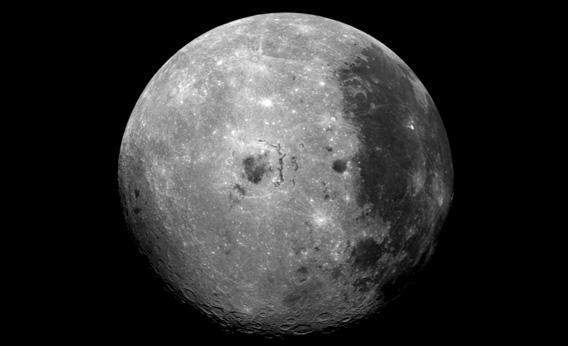The U.S. Air Force considered detonating a nuclear device on the moon during the late 1950s. In a recent interview with CNN, physicist Leonard Reiffel, who worked on the project, explained that the single explosion would have been “microscopic” with little impact on the moon. But what if it had been bigger—do we have enough nuclear weapons to push the moon out of orbit?
Not even close. Depending on where the detonation happened, sending the moon careening away from Earth would take somewhere between 10 billion and 10 trillion megatons of TNT. The most powerful nuclear device ever detonated, the Soviet Union’s “Tsar Bomba,” yielded the energy equivalent of 50 megatons of TNT. The combination of every nuclear device ever tested represents just over 500 megatons of TNT worth of energy, and the current nuclear arsenal of the world could produce less than 7,000 megatons. In other words, to move the moon out of its orbit, humanity would have to strike it in precisely the right location with a force 1.5 million times greater than our collective nuclear arsenal. (And that’s assuming that every joule of energy from the warheads would be transferred to the moon’s motion—an absolute impossibility.)
The moon is constantly edging away from us, though, without any human intervention. The moon’s pull drags a portion of the Earth’s water out of its natural position, creating bulges at each end of the planet. As Earth rotates, these bulges exert a force on the moon, dragging it through orbit and adding to the moon’s kinetic energy. As the moon gains energy, its orbit grows ever larger. On average, the moon floats 3 or 4 centimeters farther away every year.
Life without the moon would be strange in the near term and disastrous in the long term. With only the sun influencing the tides, high tide would come at noon and midnight every day. Changes in tides could significantly affect ocean currents and weather. Ocean levels would change globally, as water moved from the equator toward the poles. Modern society no longer relies on moonlight for harvesting and other nighttime activities, but several animal species base their decisions on the moon. Some sea turtle hatchlings use moonlight to direct them on their dangerous crawl to the sea. Snowshoe hares, among other small animals, appear more likely to stay at home on moonlit nights, suggesting the moon is crucial to predators. Owls talk more, and more loudly, when the moon is out.
Over the scale of thousands or millions of years, things would also get very wobbly on our planet. Currently, as the Earth spins on its axis and revolves around the sun, it remains tilted at approximately a 23.5-degree angle. This tilt is responsible for the seasons, as different locations on Earth are oriented differently toward the sun depending on the time of year. If the stabilizing influence of the moon disappeared, the Earth would begin to teeter dramatically on its axis, perhaps as much as 60 degrees. (Mars experiences a major wobble because it lacks a large moon.) The seasons would no longer be constant, and the variability in seasons would increase substantially. It’s even possible, although unlikely, that the Earth could topple over, especially if struck by a large object. Some researchers believe that’s what happened to Uranus, which orbits the sun on its side.
Got a question about today’s news? Ask the Explainer.
Explainer thanks Jim Bell of Arizona State University, Mike Brown of the California Institute of Technology, and Chris Mihos of Case Western Reserve University.
